This post may contain affiliate links. Please read our disclosure policy.
Learn how to make perfectly cooked Poached Eggs with minimal ingredients or equipment, and in less than 10 minutes! It’s so easy that you’ll be wondering why you never started poaching eggs sooner!
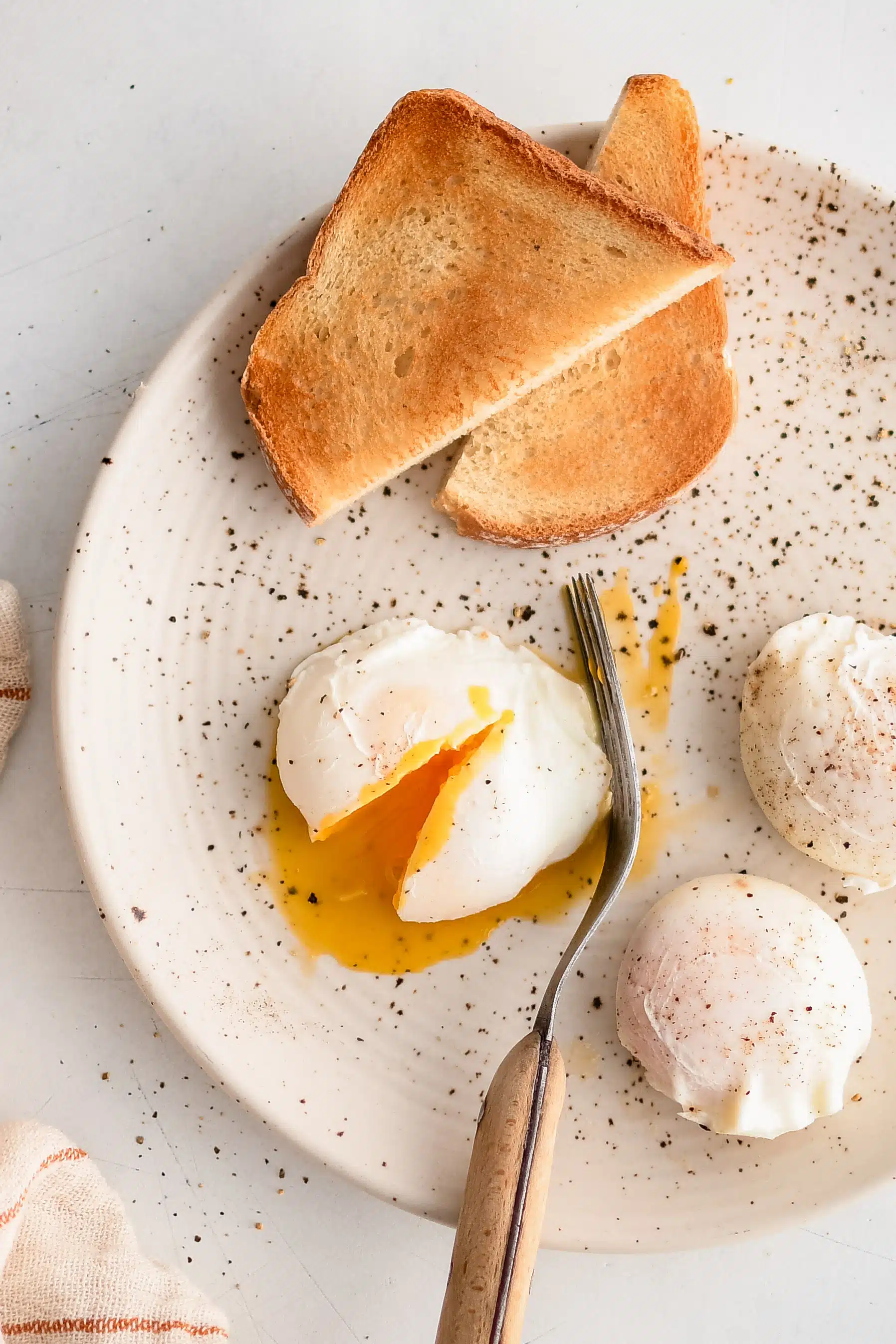
The Perfect Poached Eggs
Poaching eggs may seem intimidating at first, but I promise it is super easy to do! And the reward of enjoying softly cooked, drippy eggs on your avocado toast or in a breakfast bowl is worth learning this easy method of poaching eggs.
You only need two ingredients and less than 15 minutes to make perfectly poached eggs that the whole family can enjoy. Explore a world of new meals for your weekly menu line-up including eggs benedict and so much more! They offer the perfect alternative to scrambled eggs and hard-boiled eggs.
What are Poached Eggs?
Poached eggs are eggs that are cooked outside of their shells in simmering water, as opposed to higher temperatures like boiling water.
The “loose” whites are separated from the eggs, leaving a delicate layer of egg white around the egg yolk sack. The egg is carefully added to the simmering water where the egg white wraps around the yolk and cooks until it is firm, while the yolk remains runny or slightly thickened, depending on how long it is cooked. This method only requires 3 minutes of cooking before the eggs are gently removed from the water to be served in several dishes of your preference.
What is the Key to Perfectly Poached Eggs?
The key to a perfect poached egg is to use the freshest eggs possible. Fresher eggs have firmer, less liquid whites. Second to this is to maintain a water temperature that is just below boiling, which allows the egg to cook evenly without becoming tough or rubbery.
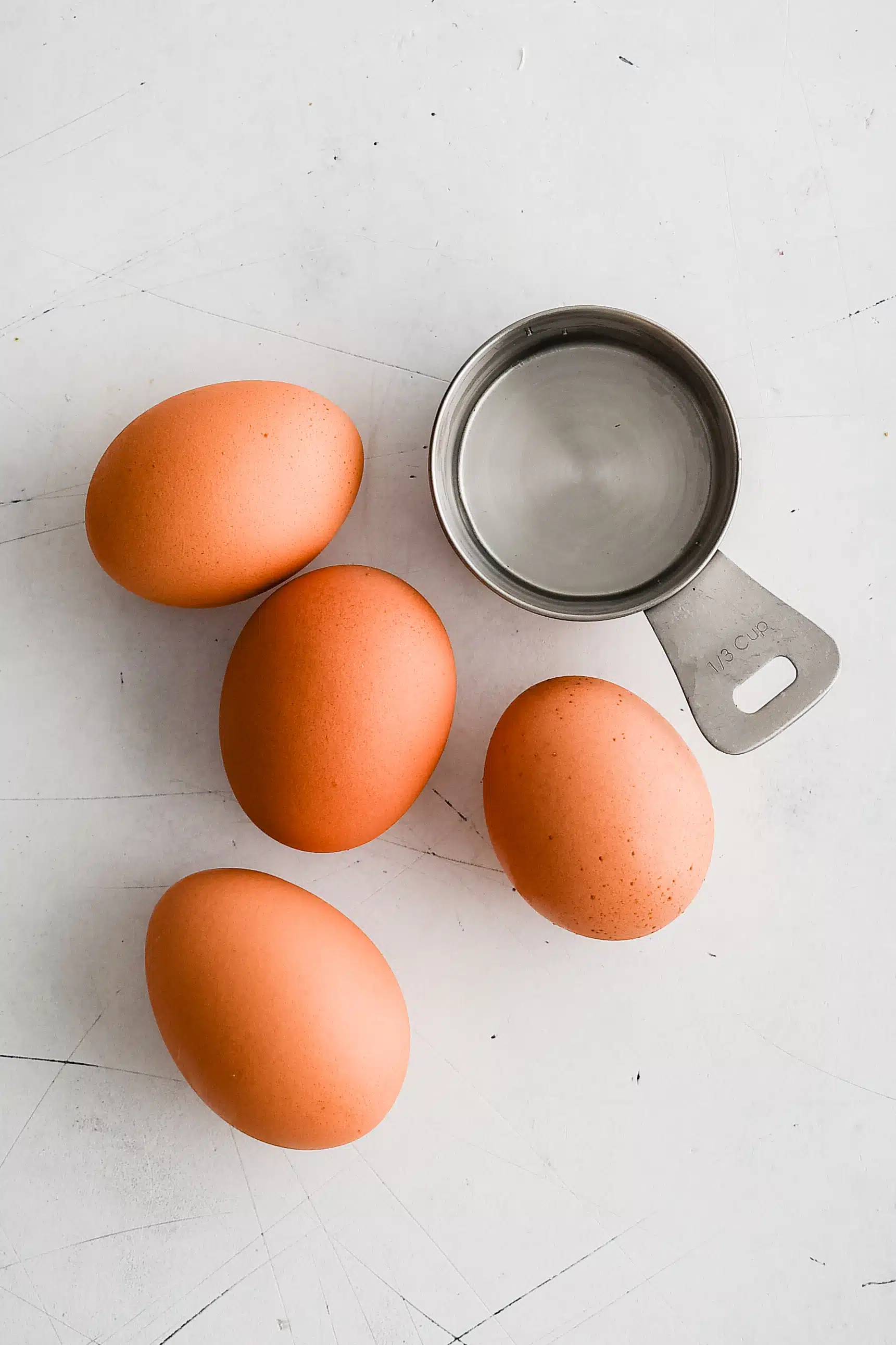
Key Ingredients
- Fresh Eggs: Allow the eggs to reach room temperature before cooking.
- Distilled vinegar (optional): White vinegar or apple cider vinegar can be used instead, but avoid dark vinegar like balsamic vinegar, as this can discolor the eggs.
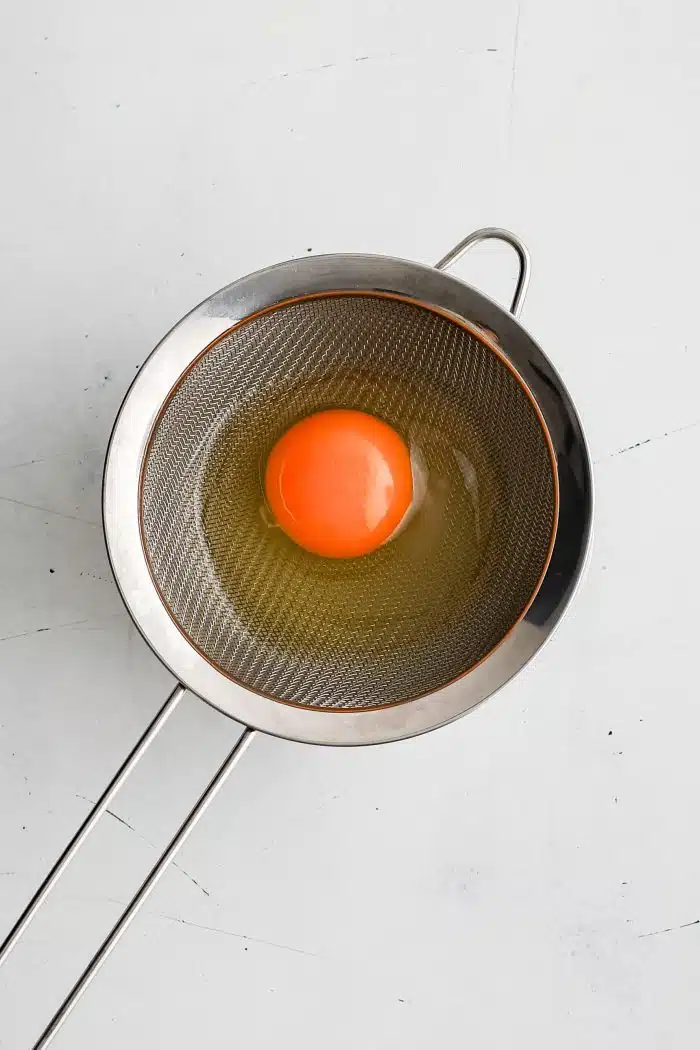
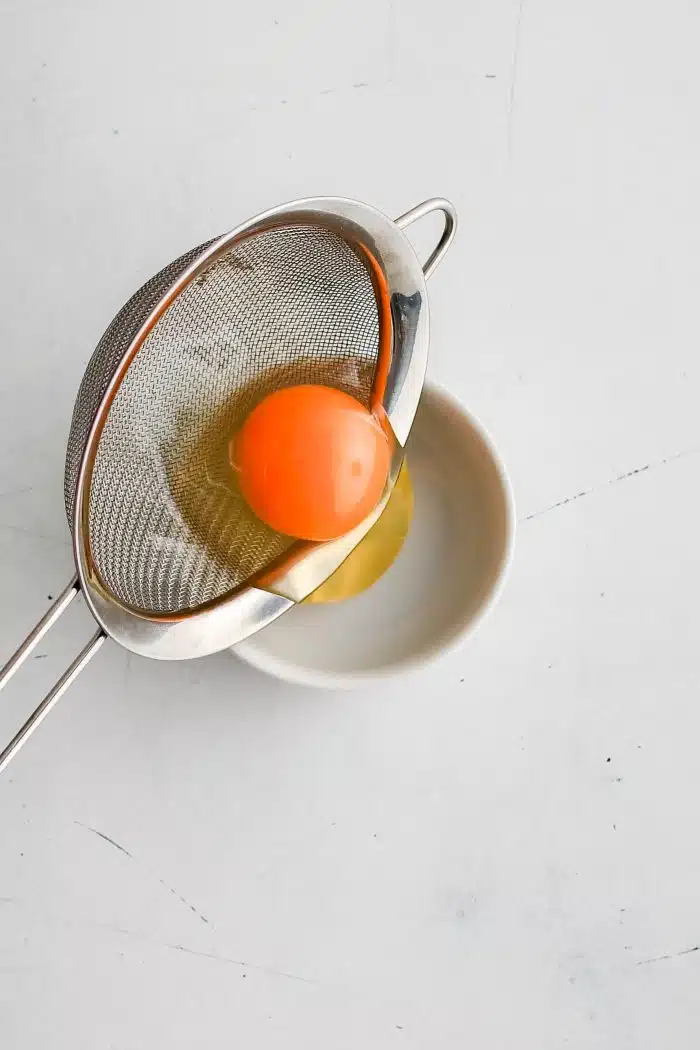
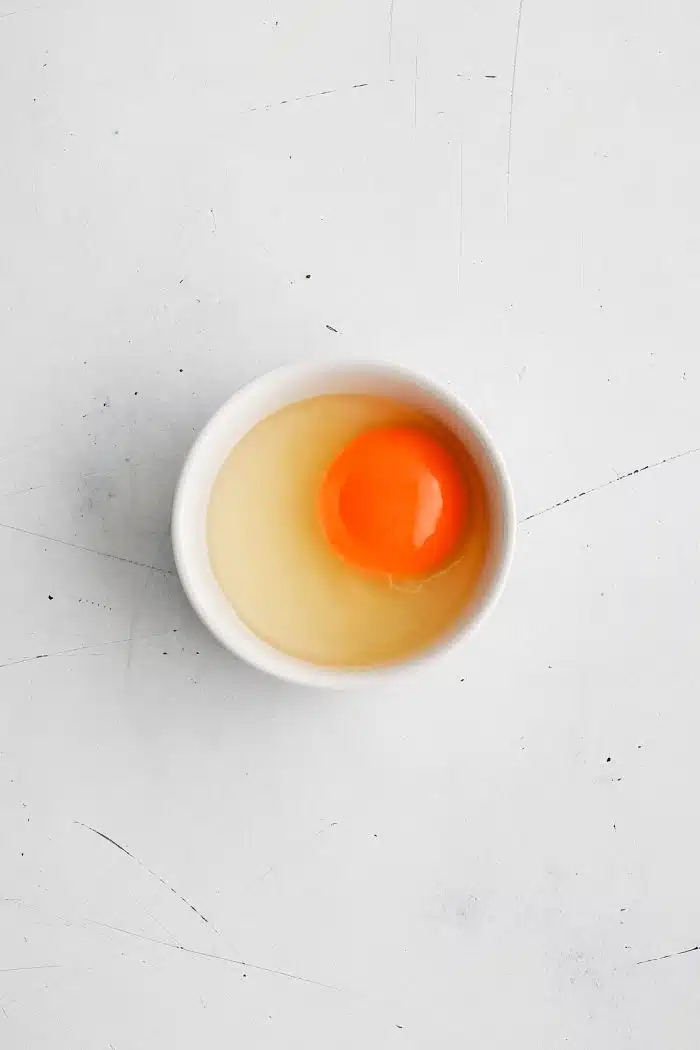
How to Make Poached Eggs
1. Boil the Water: Boil 4 inches of water in a large pot and add the vinegar.
2. Prepare the Eggs: While the water is heating to boil, crack one egg at a time into a small strainer over a bowl. Jiggle the strainer slightly so that you are left with only the white jelly part and the yolk. Slide the egg yolk into its own bowl and repeat this process for all 4 eggs.
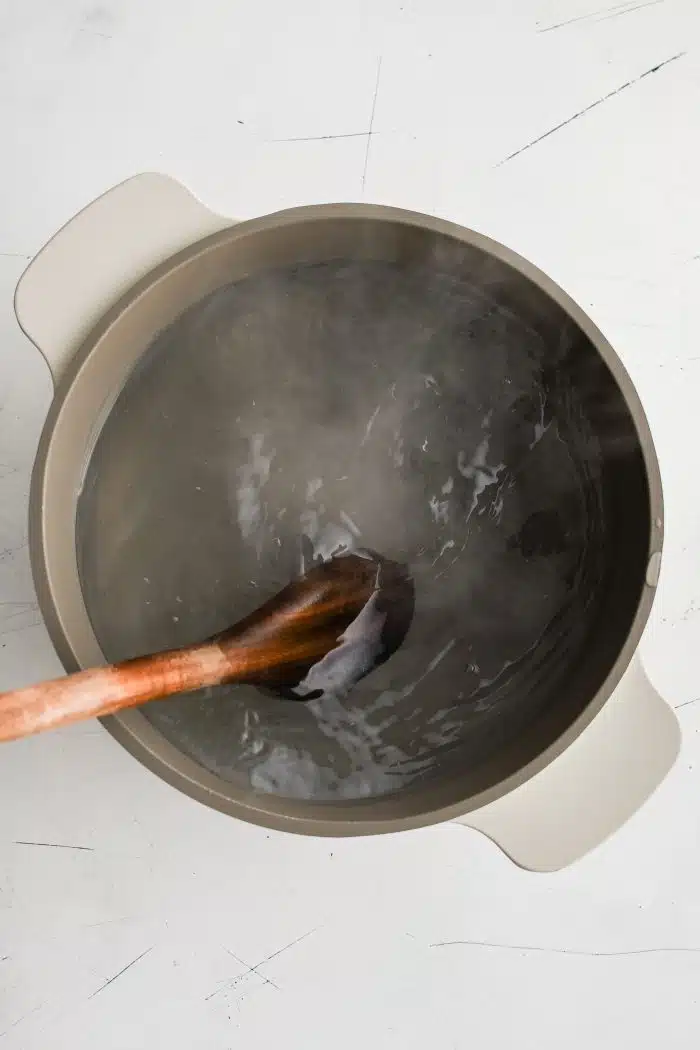
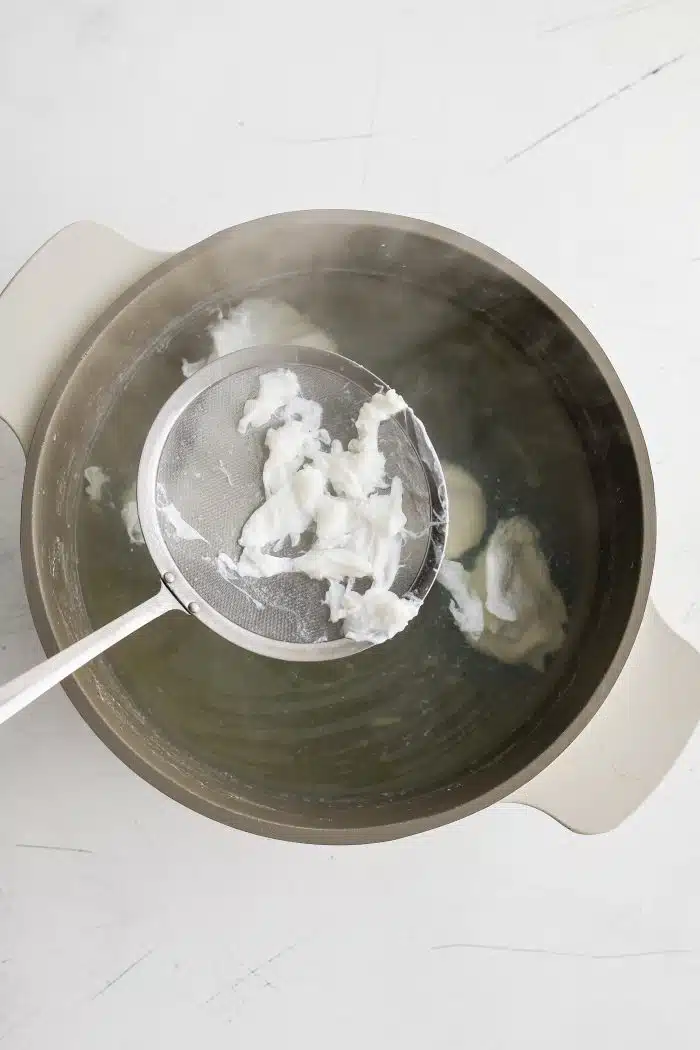
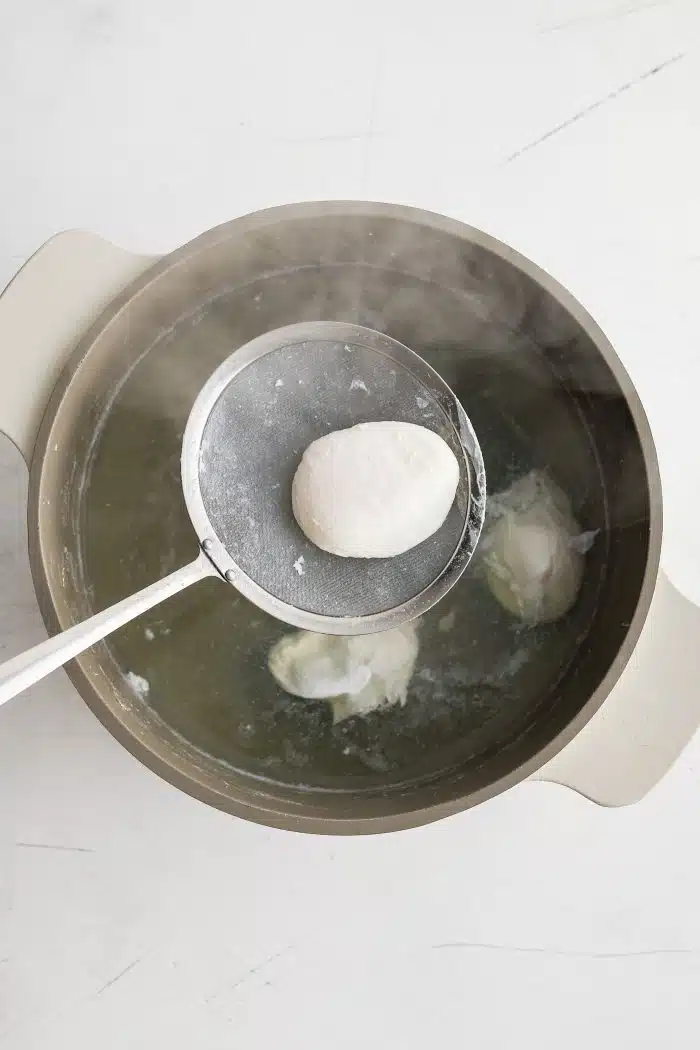
3. Stir the Water: Reduce the heat on the stove so that the water is just barely boiling. Stir the water a few times with a wooden spoon to get it moving but not so much that the egg white can’t attach to the yolk and separates instead.
4. Cook the Eggs: Gently slide each egg into the pot of water and turn up the heat on the stove just until bubbles start to resurface. Poach the eggs for 3 minutes, stirring the water occasionally so that the eggs don’t stick to the pan and the egg white forms properly around the yolk. Remove any feathered egg whites that float to the top of the pan with a small strainer and discard.
5. Serve: When the eggs are ready, remove one at a time with a slotted spoon or strainer and set them aside on a plate to cool. Serve your poached eggs with English muffins, toast, seasoning, and sauce, as desired.

How Can I Tell When My Poached Eggs Are Done?
Learning to tell when a poached egg is finished cooking may take a little trial and error, but there are a few ways of determining the doneness of your poached eggs.
- Set a timer: In general, poached eggs are ready in approximately 3 minutes for eggs with runny yolks and firm whites. You may need to extend the cooking time to 4-5 minutes for more solid yolks.
- Keep an eye on the egg whites: The whites should be opaque and set. If they still appear translucent, the egg needs more time.
- Touch Test: Remove one of the eggs from the water with a slotted spoon or strainer and use a finger to gently push the center of the egg yolk to test for doneness. It should be soft inside- you can always add the egg back and cook the eggs for an extra minute if you prefer.
How to Serve Poached Eggs
Serve your poached eggs with toasted bread, salt and pepper, a sprinkle of chopped herbs, and your favorite sauce.
You can also add your poached eggs to salads, soups, noodles, stir frys, or a breakfast bowl. Here are some delicious dishes incorporating poached eggs that you can try:
- Asparagus and Avocado Potato Salad with Poached Egg and Salmon
- Ginger Garlic Miso Ramen Noodles with Poached Egg
- Sweet Potato Hash
- Udon Noodle Soup
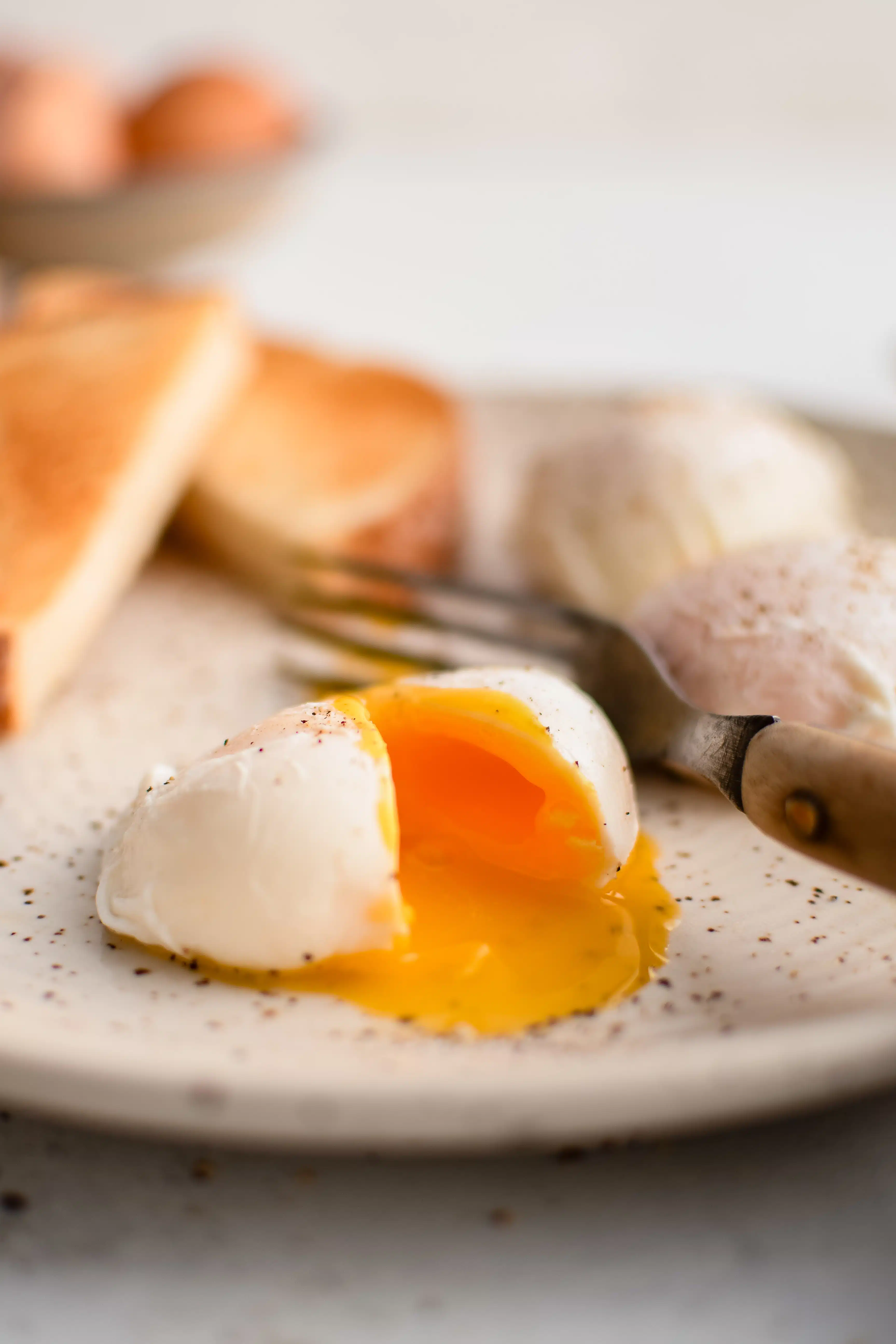
Storage and Reheating
Poached eggs can be stored in an airtight container in the fridge for up to 2 days.
Reheat your refrigerated poached eggs by placing them in a bowl with very hot tap water for 2-3 minutes. Top off with additional hot water if needed. Don’t use boiled water when reheating your poached eggs as this can overcook them.
More Egg Recipes
- How to Boil Eggs
- Instant Pot Hard Boiled Eggs
- Avgolemono Soup Recipe: Greek Lemon Chicken and Egg Soup
- Egg Drop Soup
- Egg Salad Recipe
- Egg Frittata Recipe- How to make a Frittata
Did you try making your own Perfectly Poached Eggs? Please leave me a comment and let me know! I always love to hear your thoughts.
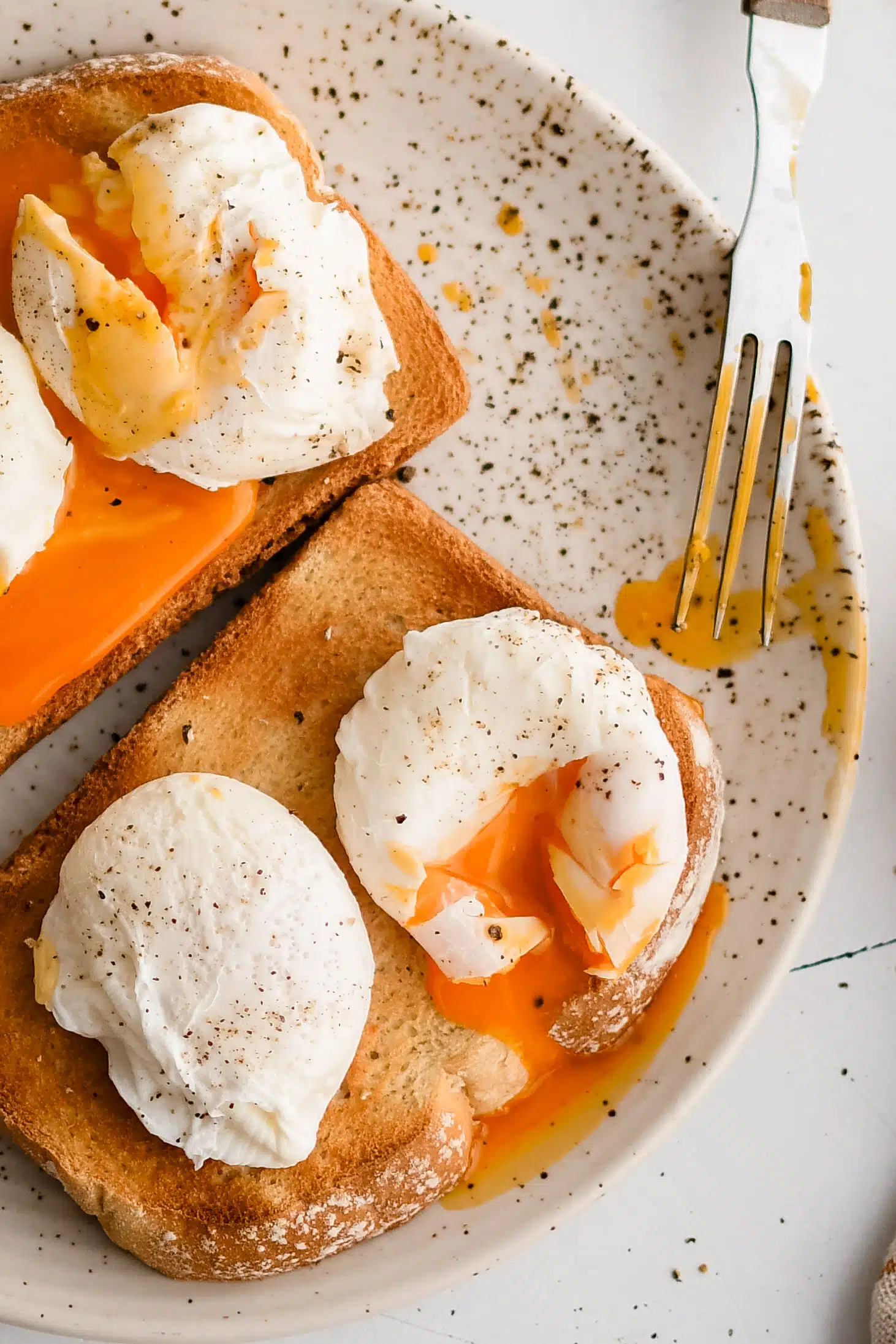

Poached Eggs Recipe: How to Poach an Egg
Instructions
- Bring 4 inches of water to boil in a large pot or saucepan and pour in the vinegar.
- In the meantime, crack the eggs one at a time into a small strainer over a bowl to catch the “loose” whites.
- Gently swirl the egg around the strainer to remove as much liquid as possible, leaving only the jelly white part and yolk.
- Gently slide each egg into its own separate small bowl or ramekin.
- Once ready, turn the heat down on the stove so that the water is just barely boiling.
- Use a wooden spoon to gently stir the water a few times to get it moving. (Don’t stir too much or the egg white won’t wrap around the yolk and will instead feather and separate.)
- Gently slide each egg into the water one at a time, and turn the heat up a notch just until bubbles start to resurface. (When you add the egg, the temperature of the water will automatically cool so it needs a bit of extra heat to come back to a low simmer.)
- Let them poach for 3 minutes, stirring the water every so often to make sure the eggs don’t stick to the pan and the egg white forms properly around the yolk.
- Strain out any feathered egg whites that float to the top and discard.
- Once ready, take each egg out of the water using a slotted spoon or strainer and set aside on a plate to cool. (You can line a plate with paper towels beforehand to soak up any excess water, but I usually just let my eggs cool a bit while I’m prepping the rest of my breakfast then dump off the excess water before plating my eggs.)
- Serve with toasted bread, salt, and pepper if desired.
Nutrition
Nutrition information is automatically calculated, so should only be used as an approximation.














